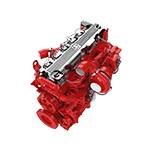stu . 10, 2024 09:14 Back to list
Guide to Proper Brake Drum Installation Techniques and Best Practices
Brake Drum Installation A Comprehensive Guide
Installing brake drums is a crucial part of maintaining a vehicle's braking system. Proper installation ensures optimal braking performance and improves vehicle safety. This article will guide you through the steps for installing brake drums, highlighting tools needed, safety measures, and best practices.
Tools and Materials Needed
Before beginning the installation process, gather the necessary tools and materials
1. Tools - Jack and jack stands - Lug wrench - Brake drum puller - Torque wrench - Screwdrivers (flathead and Phillips) - Pliers - Crescent wrench
Safety First
Safety should always be your priority when working on a vehicle. Before lifting the car, ensure it is on a flat surface and the parking brake is engaged. Use wheel chocks on the opposite wheels to prevent any unintended movement. Always wear safety glasses and gloves to protect yourself from debris and chemicals.
Step-by-Step Installation Process
brake drum installation

1. Preparation - Start by loosening the lug nuts slightly while the vehicle is still on the ground. After loosening, raise the vehicle with the jack and secure it on jack stands. - Remove the wheel by fully unscrewing the lug nuts and lifting it off.
2. Remove Old Brake Drums - Inspect the brake drum for wear or damage. If it shows signs of deep grooves or cracks, replacement is necessary. - Use a brake drum puller if the drum is stuck. Some drums may require a little tapping to loosen due to rust or wear.
3. Inspect Brake Components - Check the brake shoes, springs, and hardware for wear. If any components are worn, replace them. - Clean the backing plate and components with brake cleaner to remove dust and debris.
4. Install New Brake Drums - If replacing the brake shoes, install the new shoes according to the manufacturer’s specifications. Ensure that springs and retainers are securely connected. - Slide the new drum onto the hub. It should fit snugly but turn freely. If it feels tight, re-check the alignment of the shoes.
5. Reassemble the Wheel - Once the drum is installed, place the wheel back onto the hub and hand-tighten the lug nuts. - Lower the vehicle off the jack stands and back onto the ground.
6. Torque Specifications - With the vehicle on the ground, use a torque wrench to tighten the lug nuts to the manufacturer’s recommended specifications. This step is critical to ensure that the wheel is securely fastened.
7. Final Checks - Pump the brake pedal a few times to seat the shoes against the drum. - Take a short test drive in a safe area to listen for any unusual noises and ensure the brakes are functioning smoothly.
Conclusion
Installing brake drums is a straightforward task that can enhance safety and performance when done correctly. By following these steps and using the right tools and materials, you can successfully install brake drums and keep your vehicle's braking system in top condition. Remember, if you’re ever unsure about a procedure, consulting a professional mechanic is always a good idea. Regular maintenance not only prolongs the life of your vehicle but also ensures your safety on the road. Happy driving!
-
HINO Industrial Solutions - ¡Ң���ຽ��е��������˾ | Advanced Efficiency&Customization
NewsJul.13,2025
-
HINO Industrial Efficiency Solutions - ¡Ң���ຽ��е��������˾
NewsJul.13,2025
-
HINO Industrial Solutions - ¡Ң���ຽ��е��������˾ | Advanced Technology&Reliability
NewsJul.13,2025
-
HINO Industrial Efficiency-Jiangsu Hino Industrial|Productivity Optimization&Cost Reduction
NewsJul.12,2025
-
HINO-¡Ң���ຽ��е��������˾|Advanced Industrial Solutions&Energy Efficiency
NewsJul.12,2025
-
Premium Brake Drum Iveco – Durable Drum Brake Drum & Brake Shoe Solutions
NewsJul.08,2025
